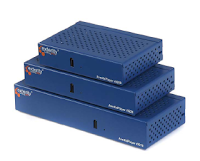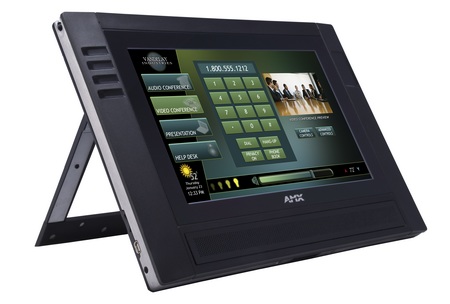Intel and AMD sign death warrant for VGA port
Wednesday, December 15, 2010 • Digital Video, DisplayPort, HDMI, VGA • 0 comments

Intel and AMD sign death warrant for VGA port
Wednesday, December 15, 2010 • Digital Video, DisplayPort, HDMI, VGA • 0 comments



Friday, November 12, 2010 • Office Technology, print management • 1 comments
Ricoh has collaborated with PrinterOn® Corporation, a leading provider of mobile printing technology, to deliver the industry's first and only fully integrated mobile printing solution that is completely embedded inside a desktop printer. Ricoh has chosen the popular SP 4210n and SP C420dn to provide this solution to customers.
Securely print documents, E-mails, and Web content from Internet-enabled laptops, cell phones, and handheld devices without downloading and installing drivers or additional software. Ricoh HotSpot Printing technology makes it easy to print anywhere.
Simple installation - All printer hardware enhancements are preconfigured; all software is pre-loaded. The system is self-configuring and ready to print in minutes, making it easy to provide mobile printing services to customers with little support.
Totally embedded - HotSpot Printer technology leverages the power of Ricoh's Embedded Software ArchitectureTM to actually install the mobile printing software securely inside the device itself. That means no external servers or appliances, and no possibility for users to accidentally change system settings or access other jobs.
A universal solution - Ricoh HotSpot Printers can perform daily network printing tasks for stationary employees in addition to supporting mobile user needs. Designed to fit in the tightest workspaces, the universal printers enable printing while eliminating any compatibility, installation, or driver support issues.
For more detailed information, visit Ricoh.
 Revolabs has announced the HD Venue Wireless Microphone System designed specifically for professional audio applications that require up to four wireless microphones. Additionally, Revolabs announced a major enhancement to the entire line of Revolabs HD Wireless Microphone Systems-- the range of the HD Wireless Microphones has been increased threefold to a distance of 300 feet (91 meters) on the Executive HD Systems and to a distance of 150 feet (46 meters) on the HD Single/Dual Channel Systems.
Revolabs has announced the HD Venue Wireless Microphone System designed specifically for professional audio applications that require up to four wireless microphones. Additionally, Revolabs announced a major enhancement to the entire line of Revolabs HD Wireless Microphone Systems-- the range of the HD Wireless Microphones has been increased threefold to a distance of 300 feet (91 meters) on the Executive HD Systems and to a distance of 150 feet (46 meters) on the HD Single/Dual Channel Systems.
The HD Venue Wireless Microphone System is a rack-mounted two-channel system. It uses any combination of the unique, secure and rechargeable HD Wireless Microphones; wearable, omni tabletop, directional tabletop, or adapters for an XLR handheld microphone and a Countryman microphone. The HD Venue Wireless Microphone System is ideal for most pro-audio applications that focus on the spoken word, such as in houses of worship, public address systems, voice lift in classrooms and auditoriums, or rental microphone systems. The flexibility of the Revolabs Wireless Microphones allows the end-user to configure the necessary microphones as needed. There are no bulky belt packs, no batteries required, and no wires. The range between the HD Venue Base Station and the placement of the HD Wireless Microphone is 300 feet (91 meters), allowing the presenter to be very far away from the sound system. Of course, actual range depends on the RF signal absorption, reflection, and interference. Up to two HD Venue Systems can be used within a single area to have four HD Wireless Microphones of any type in use.
“Many microphone users were asking us to manufacture a professional audio wireless microphone system for use in houses of worship and auditoriums, among other places. We responded with the new HD Venue System designed to fit in an AV rack while providing the unique attributes of Revolabs Wireless Microphones,” said JP Carney, Chief Operating Officer of Revolabs. “We also extended the range of the microphones on all of the HD Wireless Microphone Systems to lengthen the distance between the HD Base Stations and the HD Microphones, which broadens the market for our products. Now Revolabs microphones allow presenters to move farther away, and the audience can still hear every word.”
Thursday, October 07, 2010 • cost recovery, Digicom, Office Technology, print management • 0 comments
 Greg Clarke, managing director, Digicom; Minister for the Environment, Heritage and Local Government, John Gormley; and Alan Mason, managing director, Ricoh Ireland; at the GreenTech Audit service launch in the Aviva Stadium
Greg Clarke, managing director, Digicom; Minister for the Environment, Heritage and Local Government, John Gormley; and Alan Mason, managing director, Ricoh Ireland; at the GreenTech Audit service launch in the Aviva StadiumFriday, September 03, 2010 • AMX, AV, Aviva, Digicom, Event, Technology, Video Communications, Video Conferencing • 0 comments
 Digicom invite you to an exclusive free event to showcase the latest advancements in Audio Visual & Office Technology at Dublin's Aviva Stadium.
Digicom invite you to an exclusive free event to showcase the latest advancements in Audio Visual & Office Technology at Dublin's Aviva Stadium.Thursday, September 02, 2010 • Digital Signage, HD, Technology • 0 comments

Thursday, August 19, 2010 • Interactive, Technology, Touch Screen • 0 comments

Monday, August 16, 2010 • AMX, AV, Video Communications, Video Conferencing • 0 comments

The AMX MVP-9000i comes with built-in support for WiFi 802.11a/b/g and is capable of automatically switching between Ethernet connectivity when docked and Wi-Fi when out of dock. It includes new UI capabilities sich as gesturing and page transitions. The MVP-9000i has a 9-inch 800×480 LCD display with LED-backlit, 330-nit brightness, 700:1 contrast ratio; 1GB usable flash memory and a mini SD card slot. There are built-in speaker and microphone.
For more information click here.
Tuesday, August 03, 2010 • security, Telepresence, Video Conferencing • 0 comments
Marking yet another category-defining innovation for telepresence, Polycom and McAfee have announced a framework for a global strategic alliance to jointly develop and deliver Secure Unified Communications and Collaboration (UCC). With security threats on the rise, Polycom and McAfee are taking a proactive approach to further enhance the security features of Polycom's video, telepresence and infrastructure solutions.
Polycom plans to design solutions that feature McAfee threat protection, shielding Polycom telepresence users, from the desktop to the fully immersive suite, from potential and increasingly sophisticated security threats while making it easier to comply with privacy and confidentiality mandates.
The alliance will address a growing need for enhanced security as organizations of all sizes increasingly turn to video conferencing and telepresence to reduce costs, improve productivity, and maintain operations in the face of business disruptions. The enhanced protections can also help IT managers in regulated industries from health care to financial services lessen the burden of meeting compliance and reporting requirements.
Full article can be found here.

 Here are some tips to help ensure your teleconferences are as effective as in-person meetings. To read these tips in more detail you can view the original article here.
Here are some tips to help ensure your teleconferences are as effective as in-person meetings. To read these tips in more detail you can view the original article here.Friday, July 09, 2010 • AV, Technology • 2 comments


Thursday, June 17, 2010 • Video Communications, Video Conferencing, VOIP • 0 comments
 The concept of overscan seems particularly difficult for geeks to comprehend -- normal people usually don't care to even understand it -- and some even get down right confrontational when they first learn that all TVs do it. But the fact is that even the latest LCDs and plasmas don't show all 2 million pixels of a 1080p signal out of the box. Instead about 3 percent of 'em are cropped off the edges (as illustrated by the red line in the image above) and the remaining pixels are scaled to fill in all the pixels of your HDTV. The real kick in the head is that the reason isn't a good one, especially when you consider the advanced technology that's available today. So in this HD 101 we're going to cover what overscan is, why it's there, and finally how to "fix" it.
The concept of overscan seems particularly difficult for geeks to comprehend -- normal people usually don't care to even understand it -- and some even get down right confrontational when they first learn that all TVs do it. But the fact is that even the latest LCDs and plasmas don't show all 2 million pixels of a 1080p signal out of the box. Instead about 3 percent of 'em are cropped off the edges (as illustrated by the red line in the image above) and the remaining pixels are scaled to fill in all the pixels of your HDTV. The real kick in the head is that the reason isn't a good one, especially when you consider the advanced technology that's available today. So in this HD 101 we're going to cover what overscan is, why it's there, and finally how to "fix" it.Monday, April 26, 2010 • Disaster Recovery, HD Video Conferencing • 1 comments
Copyright © 2012 Digicom Technology News